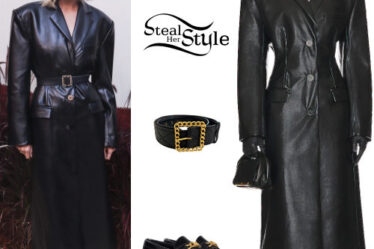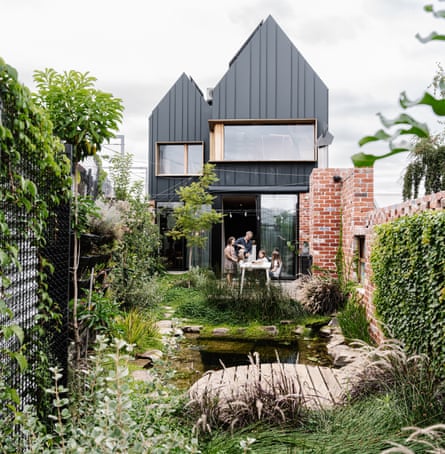
The overlooked plot that Marc and Felicity Bernstein-Hussmann ended up building a house on was deemed unfit for construction use by their local council in Melbourne, Australia, and so they faced extreme hesitancy from any bank to lend for development. Despite this, they pushed on with plans, even moving into a motorhome for four years while they went through the planning and saving process for their new home. Their tenacity was rewarded when both the council and bank U-turned, and their dream became a reality.
But what started life as a wedge-shaped piece of derelict wasteland – situated next to a 10-storey apartment block, double-storey housing site and a busy train line in Coburg, Melbourne – has been transformed by the couple into a modern passive house.
The Passivhaus was originally developed in Germany in the 1980s by Dr Wolfgang Feist, a physicist, and Professor Bo Adamson, a construction expert, who were inspired by medieval dwellings built in Iceland. The concept is underpinned by five guiding principles: airtightness; thermal insulation; mechanical-ventilation heat recovery; high-performance glazing; and thermal-bridge free construction. These eliminate the need for artificial heating or cooling systems. Taken together, the guiding principles meet the rigorous requirements of the International Passive House Association.
German-born Marc and Felicity, who studied architecture before moving to Australia, have created a working prototype for a new generation of passive house – Hütt 01 Coburg – to be created under their brand Home by Hütt. Designed as both an experimental case study and a home for the couple and their three children Anna-Lena, 16, Leon, 12, and Joshua, 10, the house showcases their passion for sustainable and contemporary design and for regenerating smaller spaces of derelict urban land. The idea of the passive house has been gaining traction in Europe and the UK, but in Australia it is still relatively new, with fewer than 50 houses certified.
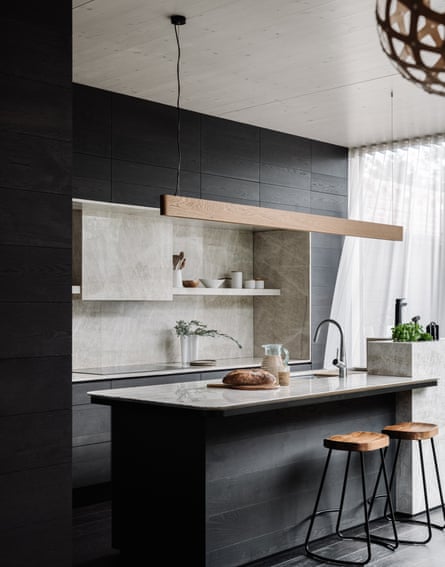
“Passive houses offer a new way of living with incredible environmental benefits and substantially reduced power costs,” says Felicity. A constant 19C to 21C is maintained indoors despite temperatures that drop in Victoria to below 5C. “We are passionate that innovation is combined seamlessly with luxury, wellbeing and beauty. There does not need to be a visual compromise.”
The all-electric house, accessed via a blue stone laneway, was modelled initially in 3D to consider the impact of every detail: the orientation to the sun to maximise solar-heating gain; cross-ventilation to flush out heat in the summer; the introduction of cooling through-breezes from the moist, shaded rainwater garden that connects to the main living area, and staircase skylights to act as a chimney against overheating.
The house is built on a concrete slab that’s continuously insulated to prevent heat transfer (thermal bridging) where the slab meets the walls. Wood-fibre insulation stores carbon, mitigates thermal bridging and is breathable – unlike conventional polystyrene insulation that can collect mould and condensation. The walls and roof are built with prefabricated cross-laminated timber (CLT) and take a week to erect, with noise-reducing, carbon-storing and insulating properties a given.
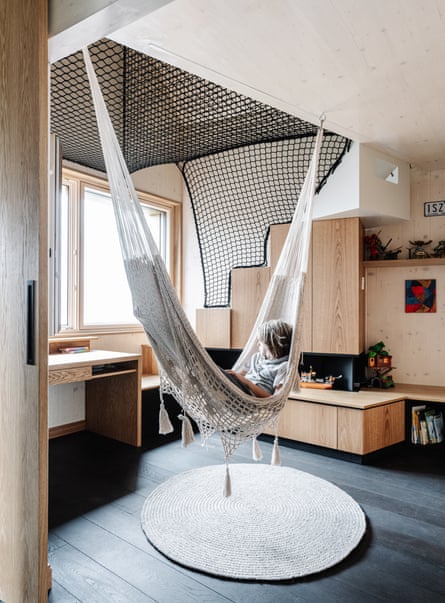
The small internal footprint works incredibly hard, and the steep pitched roof creates space in the children’s bedrooms, with mezzanine beds above areas for play, study and relaxation. The capacious feel is embellished by heavy-duty nets just above head height in the bedrooms and at the top of the stairs, which optimise space.
On the ground floor, thoughtful spatial planning has created distinctive zones for cooking, eating and relaxing – neutral, calm spaces that have a timeless appeal. The sunken-lounge flooring is a bespoke concrete mixed with recycled aggregate. Like terrazzo, it adds a refined touch and complements the marble and wood used in the kitchen – another bespoke design by Marc and Felicity. All storage is located on the ground floor, hidden behind black-stained American oak units and artfully worked into wardrobes, cupboards, a study nook and under-seat cavities.
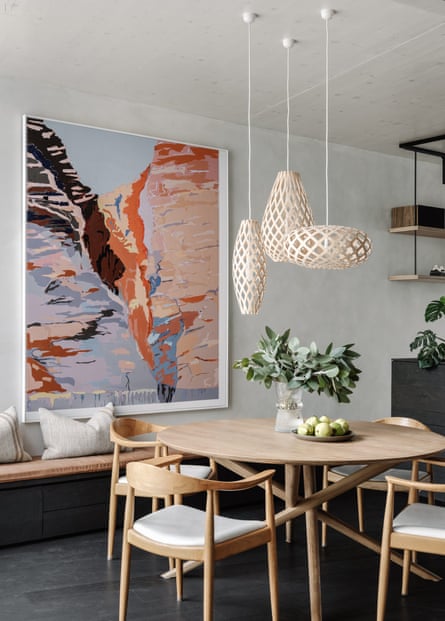
The laundry room and bathrooms feature bespoke detail: curved surfaces, a brass washstand designed by Felicity and high-end sanitaryware.
Unexpected design touches delight at every turn – light-induced patterns streaming into the stairwell from west-facing open exterior brickwork that offers a low-level sneak peek into the house; a garden window handpainted by Anna-Lena, and secret doors and passageways connecting the children’s bedroom spaces.
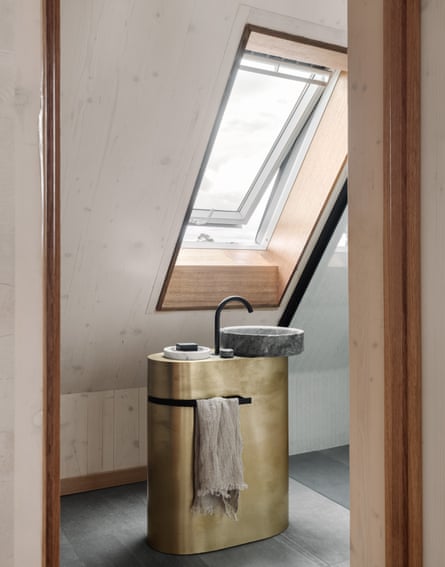
“A connection with nature inside and out is important to us,” says Marc. “Living biophilic walls enhance the ventilated air quality, eliminating allergens and increasing a sense of wellbeing.” A quirky bridge suspended over the courtyard connects to the roof garden planted with native grasses and dichondra, and a quiet rain garden which collects water that runs off the green roof. In the main garden stepping stones lead you to a wood-fired barbecue area, a goldfish pond – which irrigates a vertical kitchen garden – and a circular wooden deck area.
This house is living proof that building a sustainable home can be compatible with an urban location and a small footprint. As climate change intensifies, quality over quantity will become an ever-important design goal. With Passivhaus technology supporting sustainable choices and enhancing a sense of comfort and luxury, one can’t help but feel that this new generation of architecturally designed homes is the only way forward for building a better future.
hutt.com.au



